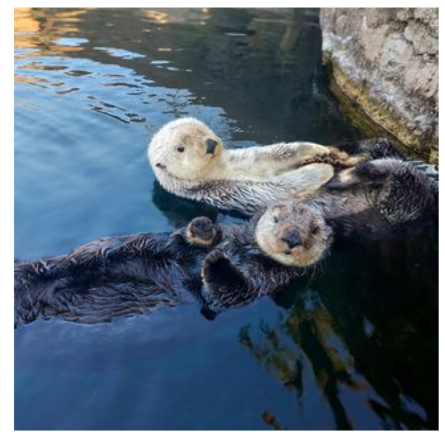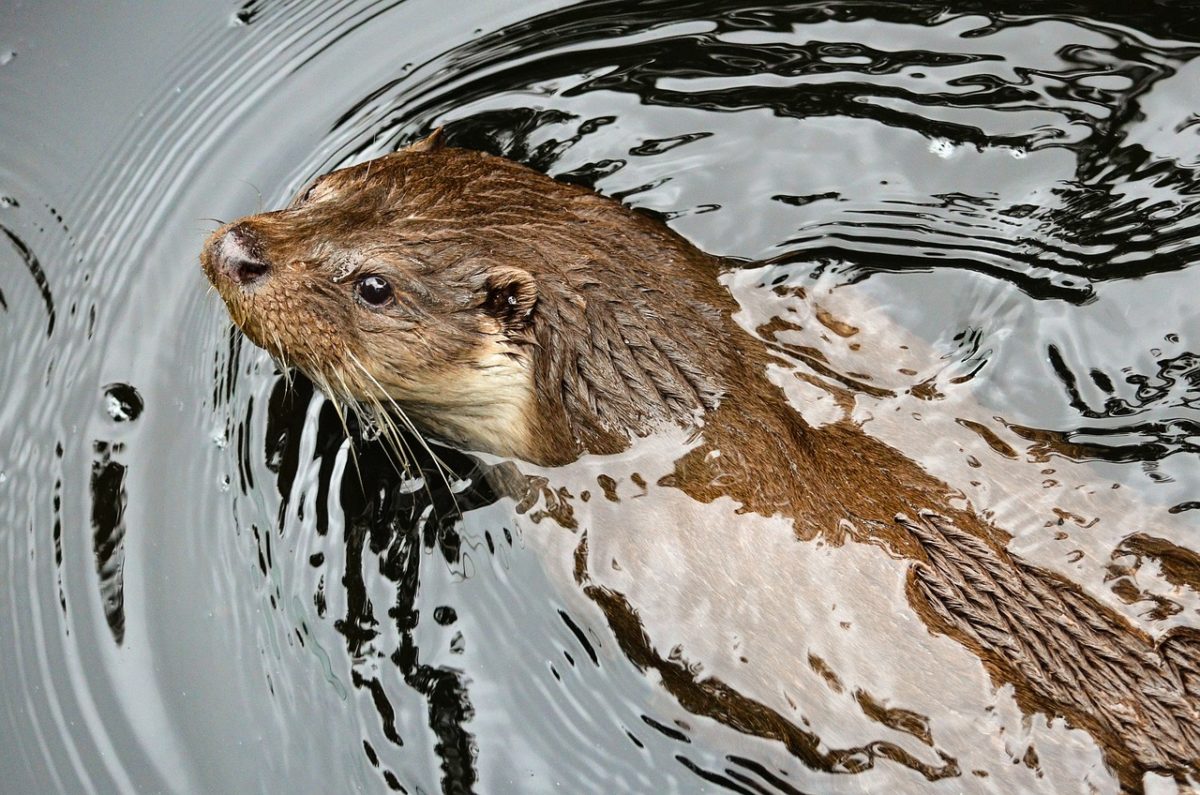There are thirteen otter species around the world; the United States is home to two of the species: sea otters and the North American river otters. Sea otters are currently on the endangered list of the International Union for the Conservation of Nature and Natural Resources (IUCN). And so, how has climate change played a role in the population changes of sea otters?
Due to climate change there will be an increase in coastal ocean temperatures as the ocean absorbs most of the excess heat from greenhouse gas emissions. This would lead to rising ocean temperatures; for sea otters this would mean increasing shark populations in their regions and decreasing kelp canopy covers- their primary source of shelter. The high energy storms or swells uproot the entire plants and break away fronds or simply cause kelp to die off.
Sea otters are considered a keystone species, which means that the health of sea otters is a great indication of the health of other species and ecosystems nearby. Sea otters are crucial in that they keep sea urchins under control. Without sea otters, sea urchin blooms would cause entire kelp forests to die off.

Conservational efforts
Some ways we can help to fight climate change is by using renewable energy, sustainable transportation such as public transport or walking, and or turning off our light/television when we are done using them. We can also use conservation-based solutions such as: restoring wetlands, conversing mangrove forests, and by protecting salt marshes to restore forest habitats.
As for our sea otters, the Wildlife Conservation Society (WCS) aims to use science to discover and understand their natural world. This would inspire decision-makers, communities, and millions of supporters to take action in order to protect the wildlife and wild places. The WCS works with many conservation partners, one of which is the New York Aquarium, where you’ll be able to see sea otters Ryder and Quint in the image above.
Many other organizations aim to protect our sea otter populations; one of which is the Monterey Bay Aquarium. The Aquarium is home to five non-releasable female sea otters. These otters act as surrogate mothers to rescued sea otter pups, which they raise as their own. They would teach the pups the skills needed to be wild sea otters; for example, grooming and foraging. As a result, pups that have been separated from their mothers get to go back into the wild.
Climate change has had devastating effects on the planet however, we tend to not realize the effects on our animals. By exercising conservation ideas we might be able to alter the effects of climate change on our sea otters and all of our animals.

